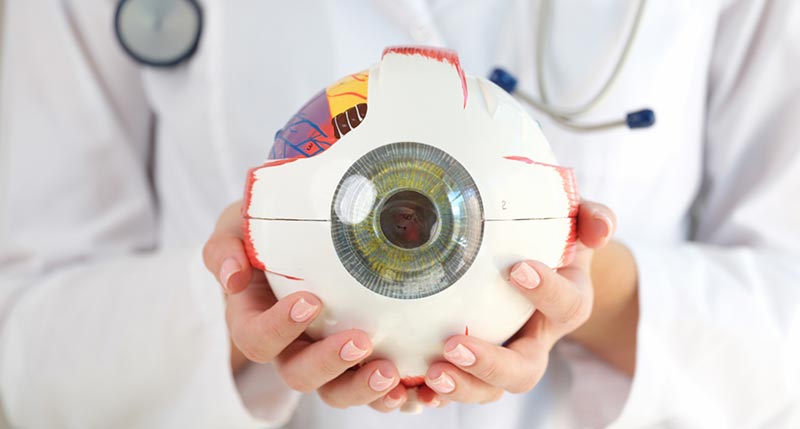Cataract Treatment Solution: Your Comprehensive Overview to Therapy Choices
Cataract Treatment Solution: Your Comprehensive Overview to Therapy Choices
Blog Article
Everything You Required to Know About the Most Recent Technologies in Glaucoma Treatment and Eyecare
In the realm of ocular health and wellness, improvements in the therapy and monitoring of glaucoma have actually been continuously evolving, leading the means for boosted person treatment and outcomes. From advanced diagnostic tools that offer unprecedented understandings right into the condition development to ingenious surgical techniques that promise greater accuracy and quicker recuperation times, the landscape of glaucoma therapy is going through a considerable change.
Advanced Diagnostic Technologies
Advanced diagnostic technologies play an important role in the very early discovery and tracking of glaucoma, permitting much more effective therapy and administration of the condition. Amongst these modern technologies, optical coherence tomography (OCT) stands apart as a non-invasive imaging technique that gives in-depth cross-sectional pictures of the retina, optic nerve head, and retinal nerve fiber layer. This high-resolution imaging helps clinicians evaluate structural adjustments in the eye triggered by glaucoma, allowing them to step in quickly.
In addition, aesthetic field screening, such as automated perimetry, is another crucial analysis tool for evaluating glaucoma-related vision loss - cataract care service. This examination measures the level of sensitivity of a patient's aesthetic field, assisting to spot any kind of areas of vision loss or distortion. By incorporating OCT imaging with visual area testing, doctor can get an extensive understanding of the condition's progression and dressmaker therapy plans as necessary
Minimally Invasive Procedure
In the world of glaucoma management, the focus shifts towards minimally invasive surgeries as an aggressive approach to address the progression of the condition complying with innovative analysis analyses such as optical comprehensibility tomography (OCT) and aesthetic area testing. Minimally invasive glaucoma surgical procedures (MIGS) have actually acquired popularity as a result of their performance in minimizing intraocular pressure while reducing the dangers and recuperation times associated with typical glaucoma surgeries. These procedures are normally executed through small lacerations, commonly combined with cataract surgery, making them much less invasive and more comfy for patients.
Some typical MIGS treatments include trabecular micro-bypass stents, which improve the outflow of aqueous humor, and micro-sized implants that enhance water drainage in the eye. In addition, laser treatments such as discerning laser trabeculoplasty (SLT) supply a non-invasive alternative for lowering intraocular pressure. By integrating these minimally invasive techniques right into glaucoma monitoring, eye doctors can give people with reliable therapy choices that focus on security and quick recuperation, inevitably boosting lasting results for individuals with glaucoma.
Novel Drug Treatments
Emerging medicine therapies existing appealing avenues for boosting the pharmacological monitoring of glaucoma, using ingenious methods to address intraocular stress control and disease development. One novel medication therapy that has actually garnered interest is Rho kinase preventions.

Telemedicine and Remote Surveillance
With the development of unique medicine treatments broadening the therapy landscape for glaucoma, the assimilation of telemedicine and remote tracking becomes a critical component in improving client care and illness monitoring. Telemedicine enables eye care specialists to from another location analyze clients, give consultations, and screen disease progression without the demand for in-person gos to. This is specifically valuable for glaucoma people who need frequent tracking to protect against vision loss. Remote surveillance technologies make it possible for people to measure their intraocular stress or aesthetic field at home, enabling prompt modifications to treatment plans. By using telemedicine and remote tracking, doctor can boost accessibility to care, boost patient compliance, and spot prospective problems early, causing much better results for individuals with glaucoma. Furthermore, these innovations use comfort for people, specifically those in remote locations or with flexibility constraints, by lowering the demand for regular center sees. Accepting telemedicine and remote tracking in glaucoma administration represents a significant development in optimizing patient treatment and therapy effectiveness.
Personalized Therapy Approaches
Advancing past traditional one-size-fits-all techniques, personalized treatment methods tailored to individual client features are reinventing the management of glaucoma. By personalizing therapy strategies based on elements such as age, illness extent, lifestyle, and other health and wellness problems, eye doctors can optimize outcomes and enhance patient fulfillment.
Tailored therapy approaches in glaucoma involve an extensive evaluation of each individual's special account. This might consist of hereditary screening to recognize details threat aspects, imaging techniques to assess structural adjustments in the eye, and functional tests to evaluate visual area loss. By incorporating these individualized understandings, doctor can establish targeted interventions that address the underlying sources of glaucoma progression for every person.
Additionally, improvements in innovation have enabled the development of tailored therapy choices such as minimally invasive glaucoma surgeries (MIGS) customized to the person's certain requirements - glaucoma service near me. These treatments provide efficient intraocular pressure control with fewer complications, boosting the general quality of treatment for glaucoma individuals. Accepting personalized therapy techniques marks a substantial paradigm change in glaucoma administration, stressing accuracy medicine to supply tailored remedies for much better patient end results
Final Thought
To conclude, the current developments in glaucoma therapy and eyecare include progressed diagnostic modern technologies, minimally invasive procedures, unique drug treatments, telemedicine and remote monitoring, and tailored treatment techniques. These developments are changing the way we treat and detect glaucoma, providing even more personalized and efficient options for clients. By remaining up-to-date with these advancements, medical care professionals can supply far better care and improve results for people with glaucoma.

With the advancement of novel medication treatments expanding the treatment landscape for glaucoma, the assimilation of telemedicine and remote monitoring emerges as a crucial component in improving person treatment and illness management. hearing service near me. Welcoming telemedicine and remote monitoring in glaucoma monitoring represents a significant improvement in maximizing person treatment and treatment efficacy
In final thought, the most current developments in glaucoma treatment and eyecare consist of progressed diagnostic innovations, minimally invasive surgical procedures, novel medication treatments, telemedicine and remote surveillance, and tailored therapy approaches.
Report this page